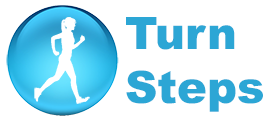Walking and Running are the pillars of all major sports. Mastering the art of right running can help you run better and longer without making you feel tired and safeguard you against injuries, the below mentioned points will make your run more effectively:
- Posture
Body erect, shoulder stretched but relaxed, body weight leaned slightly forward
- Muscles and Movement.
opposite arm and leg movement to manage momentum and speed. The primary muscles used in running are the quads, hamstrings, glutes, hip flexors and calves, secondary muscles used are the biceps, upper abs and lower abs. Using force generated by twisting waist is not advisable.
- Knee Lift and foot placement
Foot should be lifted to an appropriate height from the ground ( the height of knee lift can be variably used to increase or decrease the speed during long and short distance run ) and while landing you should land on you mid sole then roll though your toes followed by heel strike. (People with High arch or flat arch have to practice this more). The foot should be placed straight, without letting your toes deflected to sides. (Charlie’s foot)
- Stride length
An appropriate stride length which is usually equal to shoulder width should be maintained throughout
- Breathing
Follow a rhythmic breathing pattern during run, two stride inhale – 2 stride exhale simultaneously with nose and mouth. But initially focus on exhalation more to recover faster and tired less.
To avoid getting injured, tired and breathing heavy during your runs, here’s what to do:
- Check your posture. Hold your torso straight and avoid bending at the waist while you’re running.
- Focus on deep breathing. Breathe from your belly and take a deep inhale through your mouth and nose
- Use your arms to move you forward.
- Don’t run from waist, the primary muscles used in running are the quads, hamstrings, gluteus, hip flexors and calves. Surprisingly, these muscles are all located from the waist down. The secondary muscles used in running are the biceps, upper abs and lower abs. Although the biceps seems like an odd muscle to include, running is more efficient when the elbow is bent at a 90-degree angle, which brings the biceps muscles into play. The abdominal muscles support the trunk, helping to stabilize the spine and maintain correct posture, which is vital for maximizing efficiency and minimizing injury while running.
- Mouth breathing is by far the best way to breathe while running, largely because it brings in more oxygen than breathing through the nose. Forcing air through the nostrils can tighten your jaw and other facial muscles, and tension is never good for running.
Nishant Joshi
Latest posts by Nishant Joshi (see all)
- Master The Art of Running - June 3, 2018
- Turnsteps (Aerobics,Yoga,workout and Diet Studio) - April 8, 2016
- Green juice: health beverage for detoxification and weight loss - March 21, 2016
- Youngest Dance (Zumba) ,Fitness trainer - March 9, 2016
- 10 must do exercises by Nishant Joshi - February 24, 2016


Pingback: 1adapted